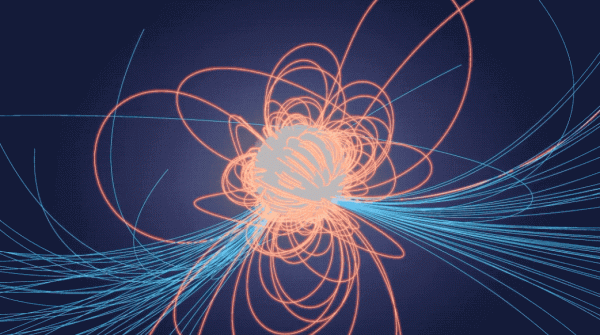Seeing beyond the horizon of a space-warping pulsar – Astronomy Now Online

A modest X-ray telescope aboard the International Space Station has provided the first accurate measurements of an isolated neutrons star’s size and mass. Taking advantage of how the concentrated gravity of massive stellar remnants bends light, the researchers even managed to peer beyond the target’s visible face to track the movement of million-degree hot spots across its surface.
“From its perch on the space station, NICER is revolutionising our understanding of pulsars,” said Paul Hertz, astrophysics division director at NASA Headquarters in Washington. “Pulsars were discovered more than 50 years ago as beacons of stars that have collapsed into dense cores, behaving unlike anything we see on Earth. With NICER we can probe the nature of these dense remnants in ways that seemed impossible until now.”
When stars like the Sun run out of nuclear fuel, fusion stops, gravity takes over and cores collapse to form slowly cooling white dwarf stars. But when much more massive stars burn out, gravity is strong enough to crush core material beyond white dwarf densities, producing neutron stars just a few miles across. Spinning neutron stars are known as pulsars because of polar jets that sweep across space like light house beacons.
NASA’s Neutron star interior Composition Explorer telescope, or NICER, aboard the International Space Station was used to study a pulsar known as J0030 located about 1,100 light years from Earth in the constellation Pisces. The pulsar spins on its axis 205 times per second.
The northern hemisphere of J0030 is visible as viewed from Earth, but the intense gravity makes the star appear larger than it actually is, warping the surrounding space and bending light from the far side enough to keep hot spots in view as the pulsar rotates.
Theory predicted one near each pole, the result of powerful magnetic fields, but the NICER data shows J0030 sports two and possibly such hot spots, all in the southern hemisphere. The results indicate the pulsar’s magnetic field is much more complicated than predicted in the traditional two-pole model.
NICER also allowed two teams of researchers, using independent methods, to calculate J0030’s mass and size with an uncertainty of less than 10 percent. One team, led by Thomas Riley, a doctoral student at the University of Amsterdam, concluded the pulsar has a mass of about 1.3 times that of the Sun crammed into a body just 25.4 kilometres (15.8 miles) across.
The other team, led by Cole Miller, an astronomy professor at the University of Maryland, came up with values of 1.4 solar masses and a diameter of 26 kilometres (16.2 miles).
“It’s remarkable, and also very reassuring, that the two teams achieved such similar sizes, masses and hot spot patterns for J0030 using different modelling approaches,” said Zaven Arzoumanian, NICER science lead at NASA’s Goddard Space Flight Center. “It tells us NICER is on the right path to help us answer an enduring question in astrophysics: What form does matter take in the ultra-dense cores of neutron stars?”






